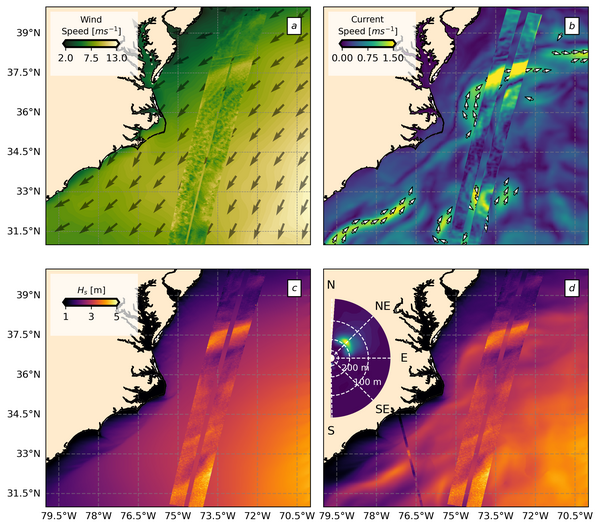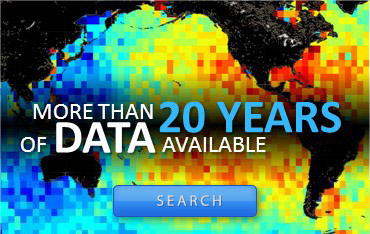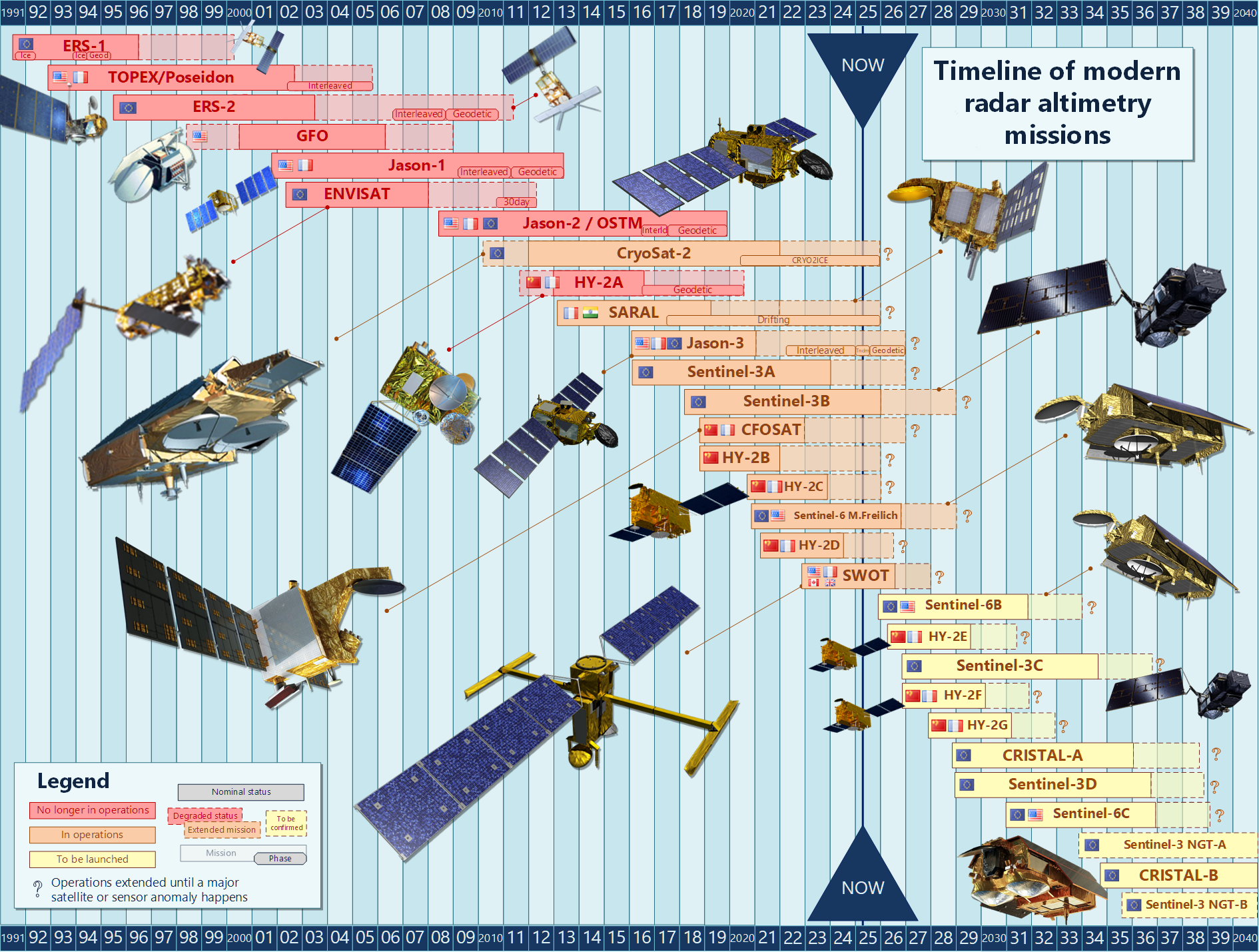Swot observes interactions between waves, winds, and currents

(a) wind speed and direction from the ERA-5 reanalysis, with wind speed from SWOT overlayed. (b) current speed and direction (only for current faster than 0.7 ms−1) from the HYCOM model. Geostrophic currents computed from SWOT's SSH observations overlayed. (c & d) WW3 significant wave height snapshots from simulations performed (c) without (CTRL) and (d) with (CURR) current forcing. Significant wave height from SWOT is overlayed on both (c) and (d). CFOSAT observations of significant wave height (thin line) and directional wave spectrum (inset) are shown on (d). (credit Colorado School of Mines)
With Swot, we can now observe significant wave height (SWH, aka Hs) in two dimensions at kilometer-scale resolution—a first in satellite oceanography. This new capability provides an unprecedented view of how surface waves interact with winds and currents, and vice versa. Swot has also revealed the ability to detect swell patterns in sea surface height - an outcome that was not anticipated (see Swot & Swell).
A study ([Villas Boas et al., 2025]) leverages Swot's SWH data, alongside wind and current observations and numerical modeling, to explore wave–wind–current interactions across four contrasting oceanic settings: the Gulf Stream, the California Current, Typhoon Mawar, and a strongly grouped swell event. Over the Gulf Stream, Swot captures enhanced SWH associated with strong eastward currents - patterns consistent with wave refraction. These results are in line with previous expectations from numerical modeling (e.g., Waves & Currents, Aug. 2017) but are now confirmed by direct satellite observations for the first time. In the California Current, Swot reveals anisotropic SWH variability driven by mesoscale turbulence, aligning with theoretical expectations (see [Wang et al. 2023]). During Typhoon Mawar, streak-like SWH patterns radiating from the storm are associated with refraction of swells by currents. Finally, the study documents how wave groups induce local SWH variability of up to 2 meters over just a few kilometers - highlighting a source of fine-scale sea state structure not captured by spectral wave models.
These observations confirm that ocean currents and wave groups play a major role in shaping sea state variability. Swot's unique view will shed light on critical problems for air–sea interaction studies, wave forecasting, and coastal hazard prediction.
References:
- Ana Beatriz Villas Bôas, Gwendal Marechal, Alejandro Bohé. Observing Interactions Between Waves, Winds, and Currents from SWOT. ESS Open Archive . December 30, 2024. https://doi.org/10.22541/essoar.173557501.11384934/v1
- Wang, H., Bôas, A. B. V., Young, W. R., & Vanneste, J. (2023, November). Scattering of swell by currents. Journal of Fluid Mechanics, 975 , A1. Retrieved 2024-10-30, from https://doi.org/10.1017/jfm.2023.686

















